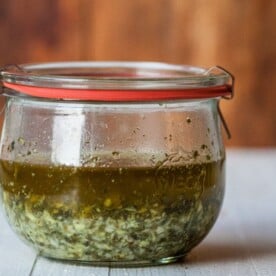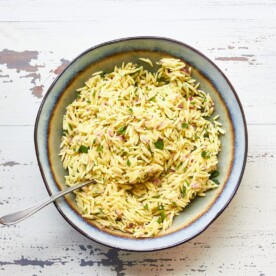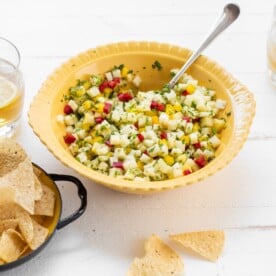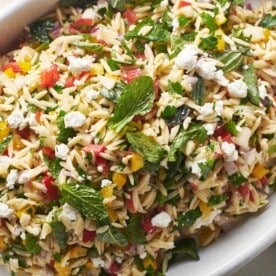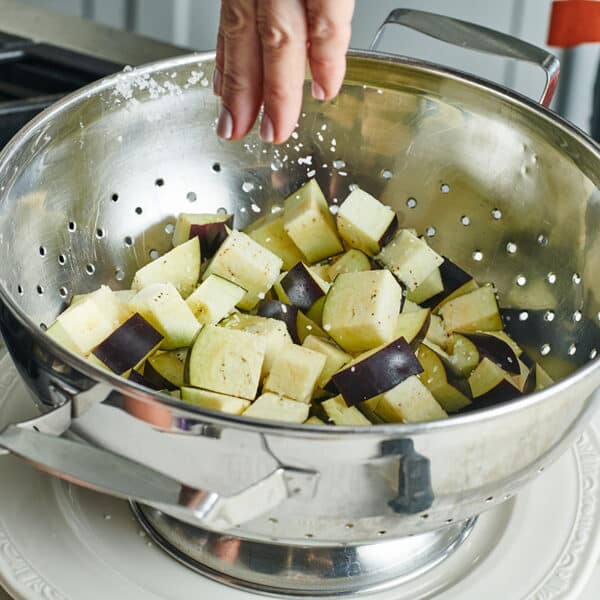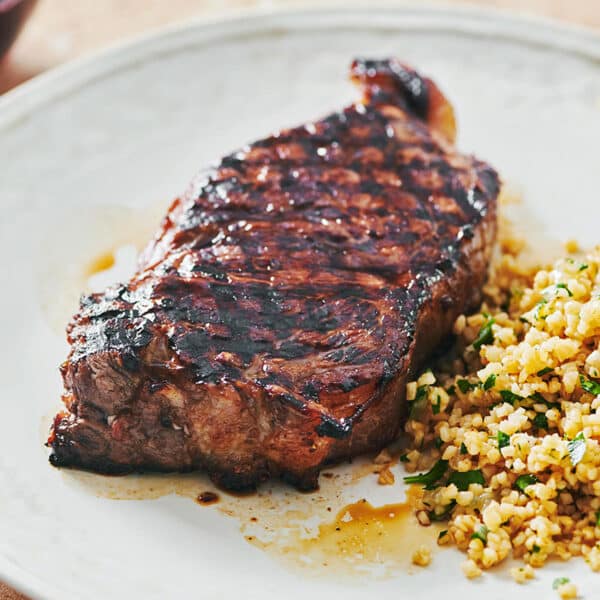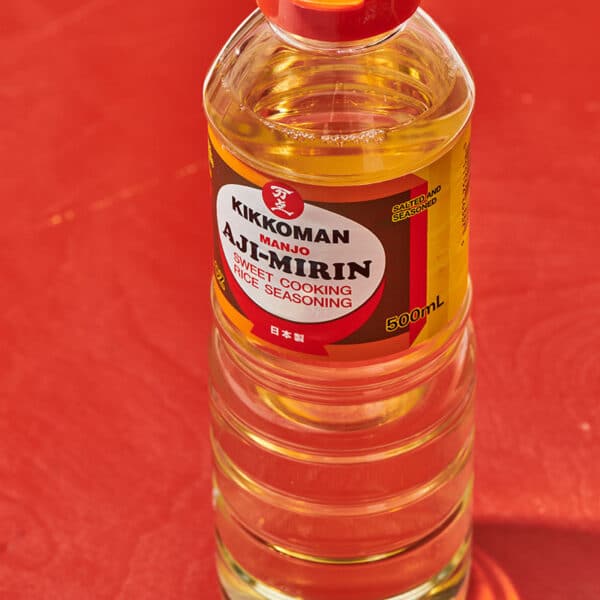How to Cook with Mint
on Aug 18, 2021, Updated Aug 06, 2024
This post may contain affiliate links. Please read our disclosure policy.
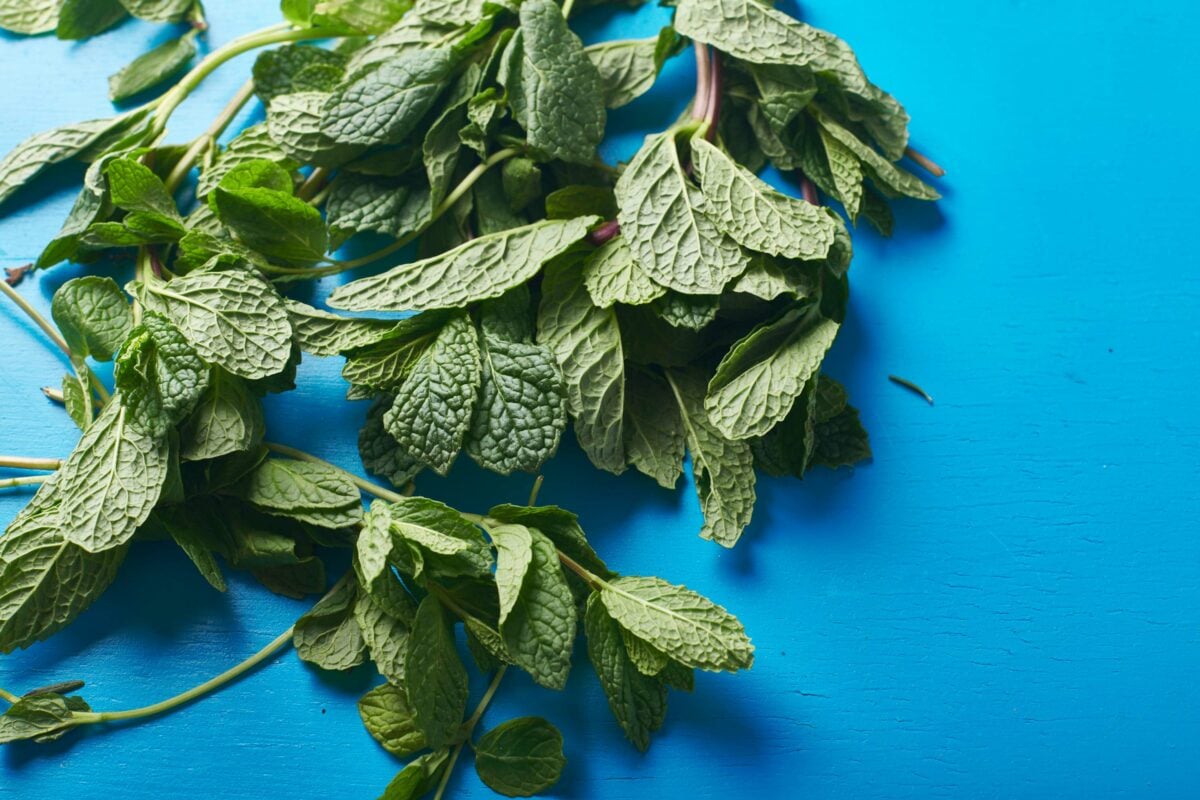
Fresh mint is one of my favorite herbs of all, and I love it in both savory and sweet recipes. It instantly brightens up so many dishes.
Mint is especially popular in Middle Eastern, Southeast Asian, and Greek cooking. In the U.S., we often think of mint as a natural partner to fruit, chocolate, and desserts of all kinds, but it’s also a terrific flavor to add to savory recipes(Americans also serve up mint jelly with their lamb on the regular). Mint is used in a variety of savory dishes, meats, baked treats, savory sauces, and drinks.
There are actually hundreds of varieties of mint. Spearmint and curly mint are probably the most commonly used in cooking. It also comes in varieties like chocolate, lemon, ginger, orange, apple, Morroccan, and Japanese, each with its own distinctive aroma and nuanced flavor. Peppermint is also an extremely popular mint but it’s pretty strong, so it’s most often is either dried or made into an oil or extract before being used in cooking.
Native to the eastern Mediterranean, mint gets its name from a mythical nymph named Minthe (try saying that three times fast). The story goes like this: Minthe had an affair with Persephone’s husband, Hades, and in a jealous rage, he turned Minthe into a lowly mint plant.
By signing up, you agree to our Privacy Policy.
What's In This Post?
- What Does Mint Look Like?
- What Does Mint Taste Like?
- Substituting Dried Mint for Fresh Mint
- Substituting Other Herbs for Mint
- Where To Find Mint
- How to Choose Fresh Mint
- How To Prepare and Cook with Mint
- Kitchen Smarts
- How to Store Mint
- How to Cook Other Fresh Herbs
- 8 Fresh Mint Recipes
- More Recipes With Fresh Herbs
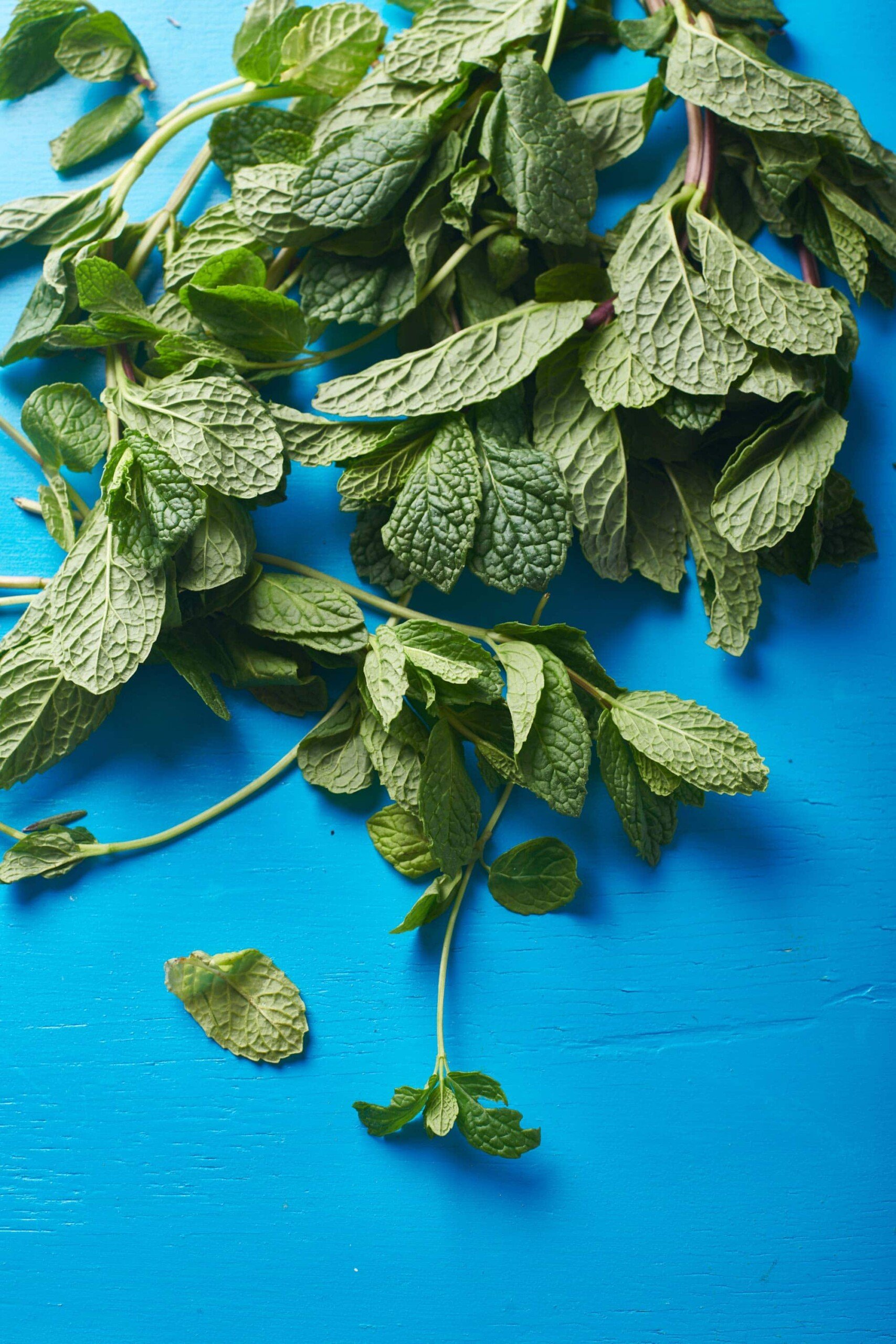
How to Cook with Mint: Everything you need to know about how to buy, store, prepare, and cook with mint. Plus recipes using mint!
What Does Mint Look Like?
Fresh mint leaves are usually a fairly bright green, and have tiny hairs that make them feel somewhat silky on your fingertips. The mint plant is a perennial with very fragrant, “toothed” leaves and sometimes tiny purple, pink, or white flowers. Depending on the variety, it might have leaves that are either shiny or fuzzy, smooth or crinkled, green or variegated, often with red or purplish streaks.

What Does Mint Taste Like?
Mint tastes sweet with a fresh, fruity, aromatic flavor. It produces a lingering cool and tingling effect on the tongue. Peppermint has a stronger peppery and menthol flavor, while spearmint tends to be sweeter, cooler, and subtler.
Substituting Dried Mint for Fresh Mint
Dried mint can be substituted for fresh in some recipes, especially any recipes that are cooked. But as with most dried herbs, dried mint does not quite have the same taste as fresh. Fresh mint tastes bright and clean, while the flavor of dried mint can be rather bitter and dull. I’m not a big fan of dried mint — this is one case where, for me, it’s fresh mint or no mint.
But if you want to use dried mint, substitute 1 teaspoon of dried mint for 1 tablespoon fresh, so a 1:3 ratio of dried to fresh mint. If a recipe calls for fresh mint and that dish is not cooked, I would steer clear of dried mint. However, if the mint is being used in something cooked, like in a soup, or used in a marinade for meat, dried is probably fine. If you are using it in a salad, though, pick another fresh herb if you don’t have fresh mint. Or, leave it out; dried won’t do.
In some recipes where fresh mint is called for (especially desserts), peppermint extract can be used as a substitute. For each tablespoon of chopped mint leaves in your recipe, use 4 drops of peppermint extract; the extract is very potent.
Substituting Other Herbs for Mint
Mint’s closest cousin is basil. Basil has similar refreshing flavors to mint, but it also has a bit more pepperiness to it, along with a bit more sweetness. You can use basil in many of the savory dishes that require mint and it can be an interesting alternative in some of the sweeter recipes as well. In more sophisticated restaurants or food products, you will see mint or basil used in everything from cocktails to ice cream to fruit salads. The combo of fresh basil (especially Thai basil) and mint is very popular in Southeast Asian cooking, as the herbs complement each other very well.
Another member of the mint family that’s popular in Italian cooking and can be used as a substitute is marjoram. You can substitute fresh or dried marjoram for fresh or dried mint. Other possibilities for alternatives to dried mint are dried oregano, tarragon, thyme, and savory.
Where To Find Mint
Fresh mint can be found in the produce section of supermarkets, particularly in the spring and summer months. In the summertime, you can find fresh big bunches of mint in grocery stores and farmers markets.
Mint is very easy to grow and becomes abundant in warm months. While it’s great in a home garden, watch out: mint is invasive and will take over an entire garden if unchecked! Make sure to separate it from other plants or plant it in a pot or somewhere that will limit its growth.
Dried mint is found in the baking aisle with the other dried herbs and spices.
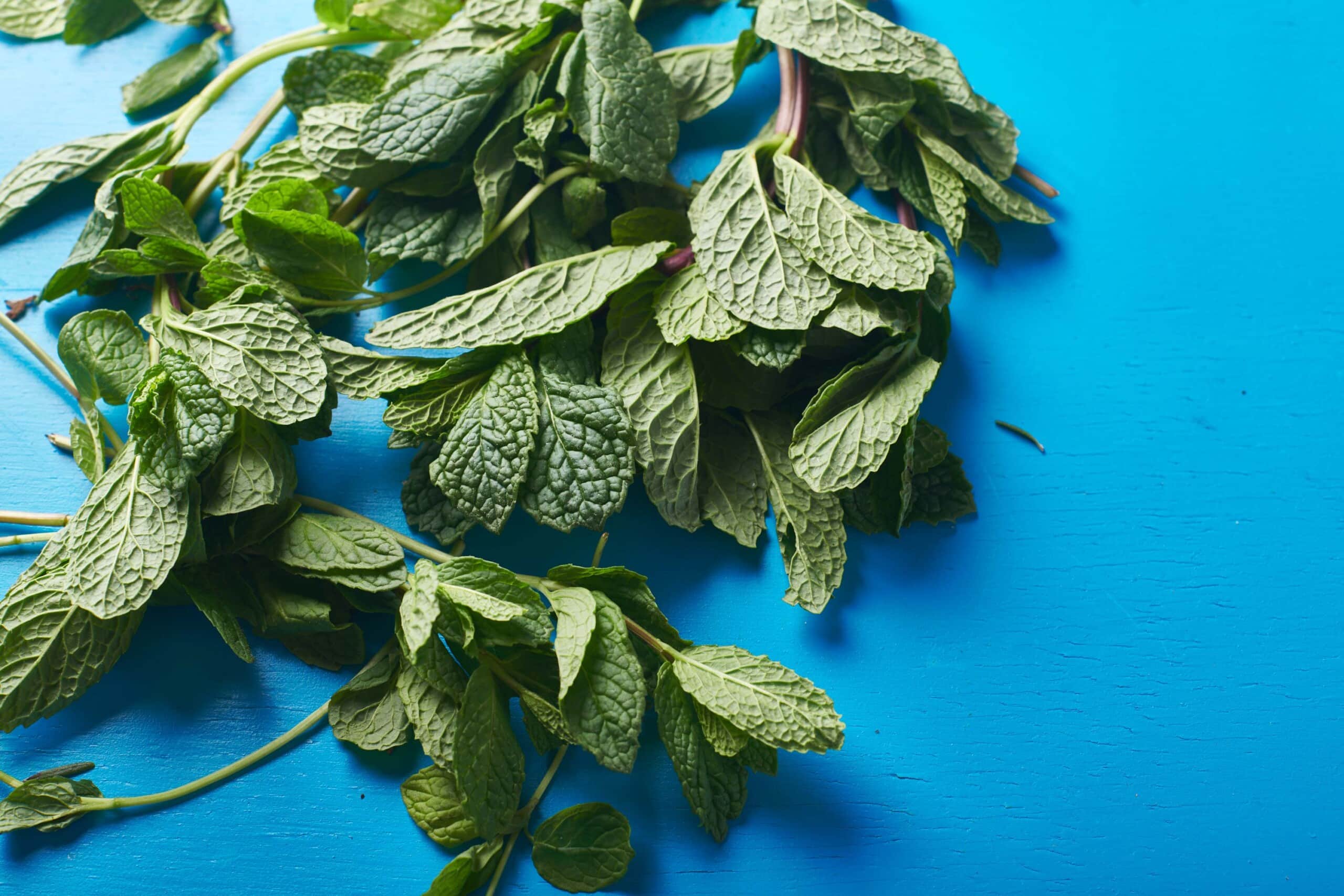
How to Choose Fresh Mint
Fresh mint may be sold in bunches (particularly at farmers markets) or in small plastic clamshell containers. Avoid bunches with browned leaves or leaves that look shriveled, dried, or damp. Sometimes it might be sold growing in a pot. You can keep that going with water and sunlight for a good long time.
How To Prepare and Cook with Mint
For starters, fresh mint leaves (on stalk or off) are wonderful added to cold beverages such as iced tea and lemonade, or mixed drinks like this Kumquat Mint Cocktail. It’s also great added to hot tea (see just below for the simplest mint tea recipe!) You can even “muddle” (crush) the mint to release more flavor.
Mint can be chopped roughly or finely or cut in thin ribbons (chiffonade). Add mint to vegetable salads, pestos, salsas, sauces, marinades, and grain or pasta salads of all kinds. Add fresh mint over sliced garden vegetables like tomatoes and cucumbers, drizzled with olive oil and sprinkled with kosher salt.
Dried mint leaves can be added to a sauce or stew as it simmers. Add dried mint when cooking a dish so that the herbs have time to release their flavor. However, you should add fresh mint at the end so the flavor stays bright.
Kitchen Smarts
Mint tea is super easy to make with fresh mint. Just add a small bunch of washed mint sprigs to a teapot and pour boiling water over them. Let the tea steep for 4 to 8 minutes, then strain and drink!
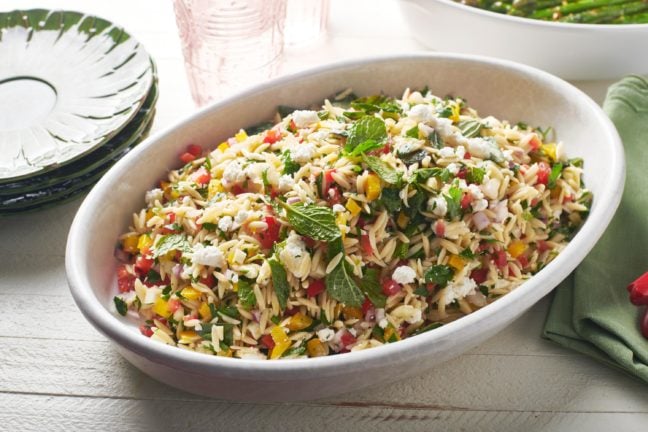
How to Store Mint
Fresh mint will last for at least a week if you wrap it in a slightly damp paper towel and then place the bundle in a sealable plastic bag or container. Store it in the crisper drawer, which has a temperature and moisture level that will encourage it to stay fresh for a bit longer.
Dried mint, like all dried herbs, should be stored in a sealed container in a cool, dry place.


